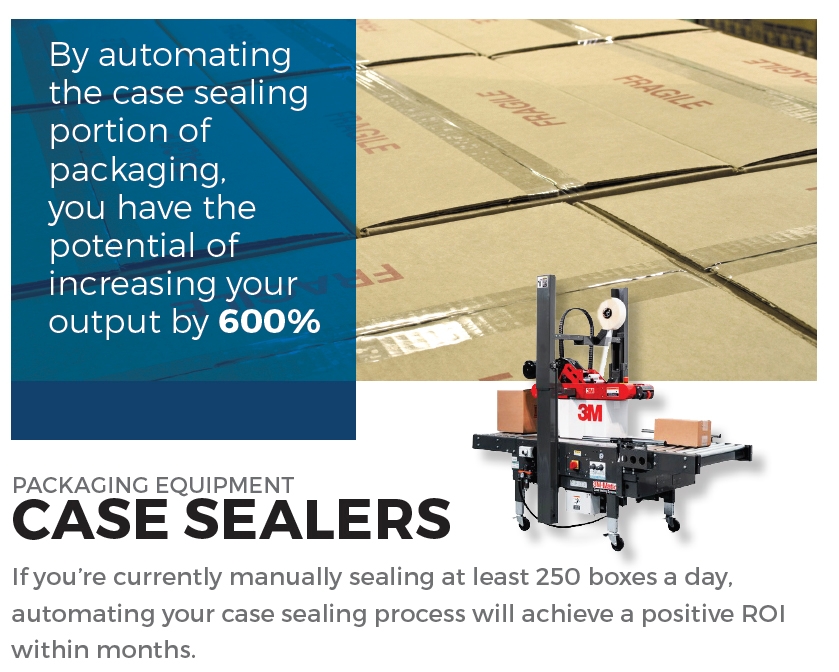
Problem
Productivity isn't where it needs to be for a manufacturer of reflective paint signs for roadways and walkways.. A case sealer would easily solve the problem, so they came to us for help. Specifically, they needed the efficiency of a semi-automatic case sealer to seal five panel folding boxes.
Box sizes: 4'' high, by 10'' to 18'' wide, by 10'' to 24'' long. Weight: 30-50 lbs., after packed with "surface communication signs".
The manufacturer needed a case sealer to be included as part of the processing production line. Their production process begins when bead, paint, and sand are extruded into rolls approx. 1/8'' thick. After this process comes the die cutting. Lettering, lines, arrow, and other symbols are die cut from these rolls to form markings. These markings would eventually be placed in pavement for road or walkway markings. You know, those cool looking "RIGHT TURN ONLY" markings on the road. Their process was as simple as an operating picking the required signage and placing the letter or symbol directly into the box. Each of those letters or symbols is protected with padding. Once the box was full, the operator would then seal it with tape. A simple process, but you can see where time is being wasted.
Solution
You can imagine how difficult and awkward the packing process of those signs is. This was a perfect opportunity to introduce a case sealer to make the packaging process more efficient. After consulting with the manufacturer, IPS Packaging suggested the Little David LD-24 as a solution.
This model met the case sealer efficiency needed for their production line. It's capable of handling the large box dimensions. The unique design for the tape tab holds the tape in place to effectively wrap the seal around low height boxes. The wide pack table was included in this unit to assist the production process and provide assembly area for the area. This freed up extra time for the operator as they didn't have to manually seal every box in the line.
Results
In the end, the manufacturer needed three case sealers to enhance their production line. Each machine uses a single piece of 3'' tape to seal five panel folding boxes. The process engineer estimated a production gain of appox. 40% in the packaging area. They attributed this gain to the efficiencies of the the new case sealer in the line. Traditionally the packaging area was a bottleneck, but since the equipment has been installed, packaging has "broken every production record."
Is a case sealer right for my company?
There's many different types of case sealers out there, and there's bound to be one that will fit your production line needs. If you're using over 250 boxes a day, you could be achieving a positive ROI within months. By automating the case sealing portion of packaging, you have the potential of increasing your output by 600%. You can see why this roadway sign manufacturer chose to install three case sealers into their production line. The returns they received really improved their production.
 Click to download our equipment brochure explaining the benefits of case sealers and other machines. You'll get a positive ROI in just a few months.
Click to download our equipment brochure explaining the benefits of case sealers and other machines. You'll get a positive ROI in just a few months.Benefits of a case sealer
Increase your output- Sealing rates up to 6x faster than manual sealing rates means less production time and higher production output on a daily basis.
Eliminate product damage- When you use staples, glue, or strap to seal cases during packaging, there's a higher probability of damage to your product. You should be using tape.
Enhanced packaging- Without the over-taped look of many cases today, on the shelf presentation of cases sealed with as case sealer is much more professional looking.







